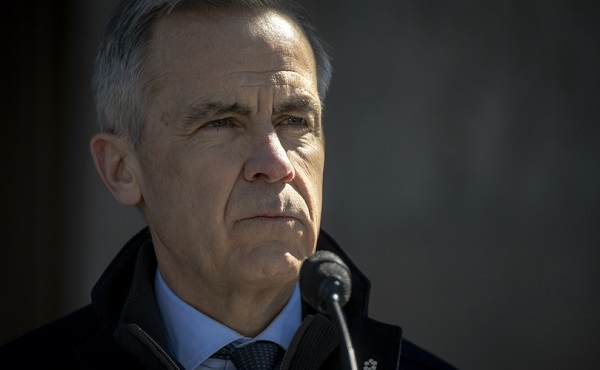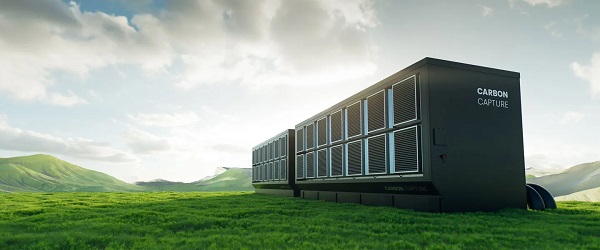National
Ontario school board reverses suspension of parent who objected to land acknowledgments

The Justice Centre for Constitutional Freedoms announces that the Hamilton-Wentworth District School Board (Board) has reversed its suspension of Catherine Kronas from her position as elected School Councillor in a significant victory for freedom of expression.
On July 16, 2025, following a review by the Board’s Human Rights Office, the Board informed Ms. Kronas in writing that her personal statement had not breached its Code of Conduct. She is now free to resume her elected role on the school council.
However, the Board stated that there remains “a concern around the school council climate,” but did not provide any additional details. The Board also reaffirmed its intention to continue opening meetings with land acknowledgements.
Constitutional lawyer Hatim Kheir said, “We are pleased to see that the Board has lifted its unconstitutional and unfair suspension of Ms. Kronas’ participation in her child’s school council.”
“The suspension should never have been imposed in the first place, but it is good to see it brought to an end,” he added.
Ms. Kronas responded to the decision by noting that the outcome vindicated her position.
“The Board has acknowledged I did not violate any Code of Conduct and has lifted my suspension. Nevertheless, the Board chose not to respect the council’s bylaws and conflict resolution process, and continues to impose a land acknowledgment,” she said.
“School councils must be free to determine their own meeting content; denying that freedom undermines the autonomy of parent-led governance,” she added.
There are no further legal proceedings expected, and the matter is considered closed.
Energy
The Pervasive Myth of a “Grand Bargain” for Alberta Pipelines

From Energy Now
By Ron Wallace and Dennis McConaghy
Following a June 2025 First Ministers meeting in Saskatoon, a session that discussed the federal government’s plan to remove trade barriers and advance major projects of national interest with the Carney governments’ Bill C-5 the One Canadian Economy legislation, the Ministers agreed to “work together to accelerate major projects in support of building a strong, resilient, and united Canada.”
At that meeting Prime Minister Carney highlighted opportunities for Canada to build new export oil pipelines to tidewater – with the proviso that those projects would require parallel investments for carbon capture stating that it’s “absolutely in our interest” to de-carbonize Canada’s oil for export. Reflecting this stance, Alberta Premier Danielle Smith welcomed a “grand bargain” with the Prime Minister based on a bold trade-off: The rapid approval of a new oil pipeline from Alberta to tidewater in exchange for major investments in carbon capture technologies. Alberta has also suggested that it would commit barrels of physical bitumen received in lieu of cash royalties from oilsands producers to encourage a possible private-sector crude pipeline to Prince Rupert, B.C. Understandably, Alberta’s Premier hopes that the province could become a global energy leader by successfully navigating federal climate commitments – a strategy that, if successful could reshape not just Alberta’s, but the entire Canadian, economy.
However, there remain material challenges to this vision. Even with the tentative support from the federal government to fast-track these projects, there remain many challenges: These include B.C.’s skepticism about any new pipelines to their northern coast, Indigenous concerns and existing Acts and Regulations like the C-69 Impact Assessment Act (IAA) and C-48 tanker ban. A Carney-Smith “grand bargain” would entail a new “decarbonized” pipeline to transport 1 million barrels per day of Alberta heavy crude oil to the west coast, a project that Smith calculates would yield annual revenues of CAD$20 billion ($14.6 billion), revenues which she proposes to use to offset the massive estimated CAD$16.5 billion cost of the Pathways Alliance carbon-capture project. Are these assumptions accurate and what are the other policy implications for Canadian energy exports and imports?
First, let’s examine the concept of “decarbonization.”
Carney has advanced the concept of “de-carbonizing” Alberta oil – but what does this mean? If anything, it must mean that the incremental emissions from oil or gas production must be captured and sequestered to reduce global emissions – a proposition that assumes that Canada is the country that determines global demand and that also drives incremental production. Similarly, there are some that argue that Canada could buy off-sets (that is to pay others to stop their existing emissions, to accommodate Canada’s incremental emissions). Leaving aside the issue that the countries that have these offsets to sell are not forced to reduce emissions like Canada, it is highly unlikely that would they be sufficient to offset a potential Canadian oil production increase on the scale of 1.0 million barrels/day.
What would be demanded is that the Canadian hydrocarbon industry physically extract CO2 emissions from the production processes associated with oil sands production, followed by the compression of such emissions to pressures sufficient to enable transport to sequestration sites, typically abandoned or depleted hydrocarbon reservoirs. Presumably this would apply not only to the emissions of the upgrading step for mined bitumen but also for the emissions related to steam generation across all the in-situ recovery sites across north-east Alberta. In face of initial capital cost-estimates for the Pathways Alliance CAD$16.5 billion Carbon Capture and Storage Project (CCS), recent studies indicate that that proposed hub in northern Alberta won’t likely break even without “substantial efficiency improvements” and much better revenue prospects. The blistering analysis by the Institute for Energy Economics and Financial Analysis (IEEFA) concludes that “rising operating costs, uncertain revenues, an oversupplied market for emission credits, and stalled efforts to improve the technology could impede the plan to capture carbon dioxide from a dozen oil sands operations and store it underground at a repository in Cold Lake, Alberta”. Importantly the report finds:
“…. troubling cost implications for the Pathways CO2 transport and storage project and raises the concern that the Canadian federal government and the province of Alberta may be pressured to make up the likely shortfall.”
The brutal reality is that the proposal will likely represent an additional cost of more than $200/tonne of extracted CO2, more likely closer to $300/tonne. In fact, in equivalent $/bbl. terms, estimates of more than $100/bbl. could be optimistic. Most of that cost would be incurred by the ongoing, unavoidable operating costs related to compression. Who pays for this cost? Not crude oil markets. It is simply a cost that Canada would impose on itself to reduce netbacks from exported oil. But imposing that cost would simply impose a loss of market share for Canada. None of Canada’s heavy oil supply competitors are imposing such a cost and no other country is paying that cost. Can Alberta, much less Canada, afford this?
We consider that Carney’s “de-carbonized” oil represents a commercial standard that may be difficult, if not impossible, for Alberta’s hydrocarbon production industry to achieve. Many might consider this to be a sophistry whereby the Carney government professes to be open to another West Coast oil pipeline, or even expanded LNG production, with terms that are impossible to meet.
Next, what are the broader implications for the Canadian economy and the energy industry?
It should come as no surprise that Carney’s recent musing about the “real potential” for decarbonized oil pipelines have sparked debate. The plain fact is that “decarbonization” is specifically aimed at western Canadian oil production as part of Ottawa’s broader strategy to achieve national emissions commitments for net zero. The Alberta Oil sands presently account for about 58% of Canada’s total oil output. Data from December 2023 show Alberta producing a record 4.53 million barrels per day (MMb/d).
Meanwhile, in 2023 eastern Canada imported on average about 490,000 barrels of crude oil per day (bpd) at a cost estimated at CAD $19.5 billion. The Canadian Energy Regulator (2023) indicates that the United States remains the largest source of Canada’s imported crude oil at 72.4%, most of which originated from the U.S. Gulf Coast (68.8%). Nigeria was the second largest supplier of imported crude oil reaching 13% of Canada’s total while Saudi Arabia was third at almost 11%. In 2023 seaborne shipments to major eastern Canadian refineries in New Brunswick averaged around 263,000 barrels per day at an estimated cost of $19.5 billion. Since 1988, marine terminals along the St. Lawrence have seen imports of foreign oil valued at more than $228 billion while the Irving Oil refinery imported $136 billion from 1988 to 2020. Are any of these deliveries subject to “decarbonization” requirements and how do they contribute to Canada meeting its targets for net zero?
Meanwhile, in 2024 Canadian exports of metallurgical coal, largely from B.C., reached 7.4 million tonnes as the Westshore Terminal exported a total of 16 million tonnes from the province. In 2022 these shipments of “non-decarbonized” coal had an export value of $12 billion for metallurgical coal and $2 billion for thermal coal.
Carney’s call for the “decarbonization” of western Canadian produced implies that western Canadian “decarbonized” oil must selectively be produced and transported to competitive world markets under an exclusive, very material, regulatory and financial burden. Meanwhile, western coal exporters and eastern Canadian refiners are allowed to operate free from any comparable regulatory burdens for “decarbonization.” A “decarbonized” oil policy aimed specifically at the Alberta oil sands and pipeline sectors penalizes, and makes less competitive, Canadian producers while ignoring other carbon-laden imports and exports.
These proposed policies reflect a contradictory and unfair federal regulatory requirement that would force Alberta to decarbonize its crude oil production without imposing similar restrictions on imported oil. Many would consider these policies to render the One Canadian Economy Act moot while creating two market realities in Canada – one that favours imports, allows for the unrestricted export of coal and discourages, or at very least threatens, the competitiveness of Alberta oil exports.
The concept of achieving “decarbonized” oil arrives at a time of significant economic and fiscal challenges for Canada. The C.D. Howe Institute predicts that the Carney government is facing a deficit of $92 billion this fiscal year with additional deficits over four years of $78 billion “more than double the level forecast by the parliamentary budget officer before the spring federal election.” These facts compel a careful examination of alternative, cost-effective strategies affecting Canadian oil production and carbon sequestration.
For instance, Lennox recently noted that there are alternative methodologies that could represent a more pragmatic approach to sequestration and which could spur private investment and innovation in cleaner energy production. Bill C-59 earmarked $12 billion in tax credits to reduce the upfront costs of investments in carbon-capture equipment but it specifically excludes a proven method of carbon sequestration, to use CO2-enhanced oil recovery (EOR), from eligibility for its Carbon Capture Utilization and Storage Investment Tax Credit. Lennox suggests that should the Carney government remove this exclusionary clause it could unleash billions in investments in EOR for carbon sequestration.
As Black recently commented:
“If Mark Carney thinks he can stimulate the Canadian economy by embracing a number of these desirable and impressive projects at the same time that he lumbers the economy with tax increases and the continued war on the oil and gas industries to reduce our carbon footprint, the result will be a political and economic disaster. The stimulus of the grant projects will be more than offset by the depressive impact of the continuing war on oil and gas, which may well provoke the voters of Alberta to request consideration of the virtues of secession from Canada, an event that would produce instantaneous concurrence from Quebec for different reasons. An atmosphere of serious political lack of confidence will ensue, and the economy will both evoke and reflect that fact.”
Canadians understand that Canadian regulations for emissions caps and “de-carbonized” oil will not impact the growth of global emissions simply because other heavy producers will meet that demand – most of which would otherwise have been supplied by Canada. In addition to the billions in lost capital investment suffered under the previous Trudeau government, and the potential to incur irreconcilable differences within Confederation, the prospect of “decarbonized” oil represents not a “grand bargain” but a “pyrrhic” ideological victory. Is this what the Carney government would propose to impose on Alberta: To deny economic value to Canada at a crucial time in our economic history while achieving little, or no, reductions in global emissions?
Ron Wallace is a retired, former Member of the National Energy Board. Dennis McConaghy, a former executive at TransCanada Corp., now TC Energy, recently published his third book, “Carbon Change: Canada on the Brink of Decarbonization”.
Business
Canadians have surrendered complete control to Mark Carney

From LifeSiteNews
Bill C-5 can be accurately and fairly described as Mark Carney’s grab for power in Canada. Here’s why.
Mark Carney operates as a banker and corporate leader, not as prime minister. We saw this in blazing technicolor when he brought forward Bill C-5, passed in the House of Commons on the 20th of June and rubber stamped without any amendments by the Trudeau-appointed Senate on June 26, 2025.
Ignoring Parliament
The manner with which this bill was passed indicates that Carney does not waste his precious time on such trivialities and nonessentials as Parliamentary procedures. Parliamentary debate, and parliamentary committee scrutiny were eliminated in the hurry to pass Bill C-5. Only one-and-a-half days were allotted for the committee’s review. Usually, a committee takes several months to review a bill. In the brief time the bill was before the committee, there was scarcely enough time to set up the committee, let alone examine the bill.
There was no public input allowed. Indigenous groups were especially alarmed that they were ignored since the bill could impact significantly on their interests. Carney whipped aside such inconsequential procedures because he knows best and expects only applause from his complacent personally selected cabinet who would not dare make even a suggestion about Carney’s extravagant plan.
Rule by cabinet
This bill can be accurately and fairly described as Carney’s grab for power in Canada. This is because the Act provides Carney and his cabinet with the power to fast-track major national projects to come into effect within a two-year period rather than a customary five-year period. The Act provides that Carney can do so by way of Orders-in-Council (defined as a law made by a person or body who has been granted (delegated) law-making authority) by removing any laws that may impede the project which Carney has designated as being in the national interest. In fact Bill C-5 makes the supposed national interest into Carney’s self-interest, since he will be the only one deciding which projects will be chosen.
The use of Orders-in-Council, which in effect, makes laws by regulation, only requires cabinet approval and bypasses Parliament. That is, the use of regulations provided by Orders-in-Council (which regulations have not yet been written), constitutes a huge shift of power away from Parliament to Cabinet and the Prime Minister’s office. The Orders-in-Council strike at the very foundation of Parliament, which is the ability to make laws. Also, it avoids Parliamentary scrutiny, fundamental to democracy. In a Parliamentary democracy, the legitimacy of laws is derived from the consent of the governed, through Parliament, whose members are elected by the public. Delegating legislation by regulation seriously weakens this fundamental principle.
Further, under Bill C-5, Carney has the power to suspend by Orders-in-Council any federal laws that may apply to his projects. This would include dispensing with conflict-of-interest laws, the Access to Information Act, any review by the Auditor General, even preventing police action by eliminating the provisions of the Criminal Code.
Labour mobility is a provincial matter
Bill C-5 consists of two Acts together. The first is the “Free Trade and Labour Mobility Canada Act”. This Act is useless and meaningless since labour mobility falls solely under provincial jurisdiction, and the federal government has no authority to deal with this issue. In addition, the regulations governing professions and unions such as legal, medical, accounting, social services, and trades, etc. fall strictly under provincial jurisdiction. Also, they exist to protect a particular profession or trade’s turf or rights, supposedly in the public interest.
The reality, however, is that the provincial labour mobility barriers on professions and trades exist as much to keep out people in a particular field, in order to protect that profession or trade in that province. If this were not the case, many individuals might choose not to remain in a high tax jurisdiction such as Quebec or Ontario, but would, instead, move to provinces with lower tax rates such as Alberta or Saskatchewan. The provincial trade barriers also protect provincial industries such as breweries and wineries, which the provinces want to protect from competition outside the province.
The real power in Bill C-5
The real power of Bill C-5 is the “Building Canada Act”. It is designed to allow Carney to handpick and facilitate the building of expensive, wasteful, environmentally harmful and inefficient solar and wind projects. These projects will not solve any supposed “climate crisis” or energy shortages but rather will enrich the private consortiums that Carney is all too comfortable with. As such, the bill’s passage is another huge slap in the face not only to the West but to all of Canada. Carney’s Minister of Environment, Julie Dabrusin, stated in the National Post on July 5, 2025, that “the environment remains a priority for Prime Minister Mark Carney” as his government prepares to fast track major projects.
Essentially, the cabinet, which means Carney, is free to decide which projects will be “in the national interest”. Some grand and glorious projects have already been floated. This includes constructing an economic corridor connecting BC’s north-west coast, through the Prairies to Hudson Bay, and eventually linking it by road to an Arctic port in Grays Bay, Nunavut. Other ideas include port-to-port infrastructures including roads, rail, power generation, transmission and pipelines, to deliver energy, critical minerals, agriculture and manufactured goods, to tide water for export.
These grandiose projects will, of course, require investment from outside sources. Such sources will likely be Carney’s colleagues and friends from his former employer at Brookfield Assets Management, since the conflict-of-interest restrictions will be easily put aside by Orders-in-Council. These investment sources will also likely include Carney’s associates in Communist China who would be delighted to get their tentacles into Canadian industry and its natural resources.
If Carney wanted to move the economy
If Carney really wanted to move the economy, he would have repealed legislation put in place by Trudeau, supposedly to protect the environment. In effect, they were designed to curtail the oil and gas industry as well as other projects. This legislation includes the Oil Tanker Moratorium Act (known as Bill C-48), which bans oil tankers from operating off the coast of BC; The Impact Assessment Act (IA); and the Canadian Energy Regulator Act.
Carney also should have moved the economy forward by helping individual Canadians, not rich investors, by establishing funds to assist developing small business operations, and by increasing Canadian ownership of Canadian assets to produce economic activity and wealth. Simply put, we need to make it easier for independent Canadian entrepreneurs to buy into businesses or start up new ones. We need a better funded network of community investment institutions to provide low-cost capital with federal loan guarantees to facilitate the acquisition of small and medium size businesses by employees, co-ops and communities.
A sovereign fund could invest and acquire Canadian businesses, keeping them in Canadian hands. Canada should be stricter about preventing foreign takeovers of Canadian industries by foreign investors which will occur under Carney’s Bill C-5. Further, it is significant that Canadians do not know what Carney’s investments consist of. He refuses to disclose them. He knows what they are, however. Will he be embellishing his own investments under Bill C-5? We will never know.
Why did the Conservative Party support Bill C-5?
The Conservative Party was asleep at the switch when it supported Bill C-5 allowing the powerful Carney train to rush past it on to victory and unfettered power. By supporting Bill C-5, the Conservatives have betrayed not only Western Canada, but also the 41% of Canadians who voted for them. The federal Conservative Party by supporting Bill C-5 signaled its rapprochement with the elites of Central Canada and Club Laurentian. Such rapprochement does not bode well for Western interests, political diversity or Canadian unity. It appears that the Conservative Party has been taken over by the red Tories and the eastern Laurentian elites to exclude social Conservatives and other genuine Conservatives.
In effect, the Conservative party, by voting for Bill C-5, joined forces with the Liberals, conceding the direction of the economy to the sole control of Carney. The Globe and Mail, the mouthpiece for the Laurentian elites, which bends the knee to Carney, whom it has placed on a throne as our king and saviour, was ecstatic that the Conservatives voted for the bill. An editorial dated, July 4, 2025, although acknowledging that Carney had “tightly controlled debate” on the legislation, stated that “Canadians want and need to see more cooperation and mutual respect between the main political parties”. It went on to say that “this new willingness to play nice was done in the name of the country’s interest”.
More accurately, it was done in the Liberal Party’s interest, cutting out genuine Conservatives from the party in favor of bringing Canada solidly left of center with the Liberal party dominating the agenda. An absent Opposition is a disloyal Opposition—as the federal Conservatives are about to learn to their, and the country’s, peril.
Reprinted with permission from REAL Women of Canada.
-

 Alberta2 days ago
Alberta2 days agoOPEC+ is playing a dangerous game with oil
-

 Alberta2 days ago
Alberta2 days agoUpgrades at Port of Churchill spark ambitions for nation-building Arctic exports
-

 Bruce Dowbiggin2 days ago
Bruce Dowbiggin2 days agoHow Did PEI Become A Forward Branch Plant For Xi’s China?
-

 Alberta19 hours ago
Alberta19 hours agoCanada’s Energy Future Can’t Wait
-

 Business19 hours ago
Business19 hours agoCarney should rethink ‘carbon capture’ climate cure
-

 International1 day ago
International1 day agoThis ends now: Trump orders Bondi to unseal Epstein grand jury testimony
-

 Business8 hours ago
Business8 hours agoCanadians have surrendered complete control to Mark Carney
-

 Business1 day ago
Business1 day agoCoffee price explosion a self-inflicted wound: Liberal tariff drives up cost of coffee






